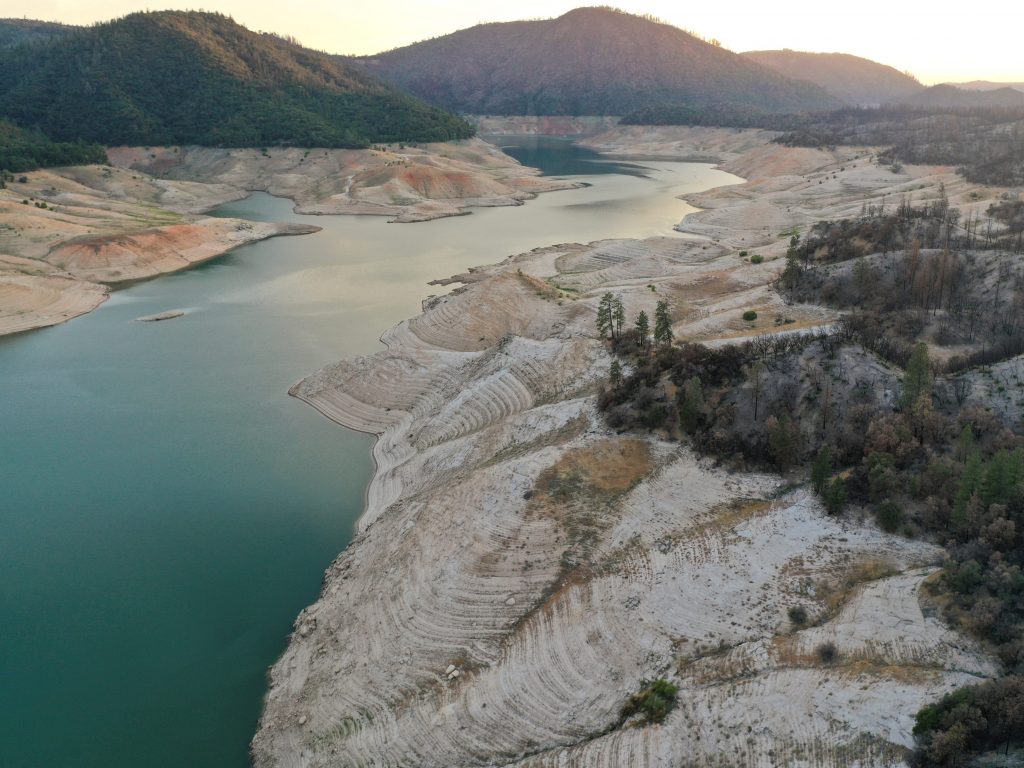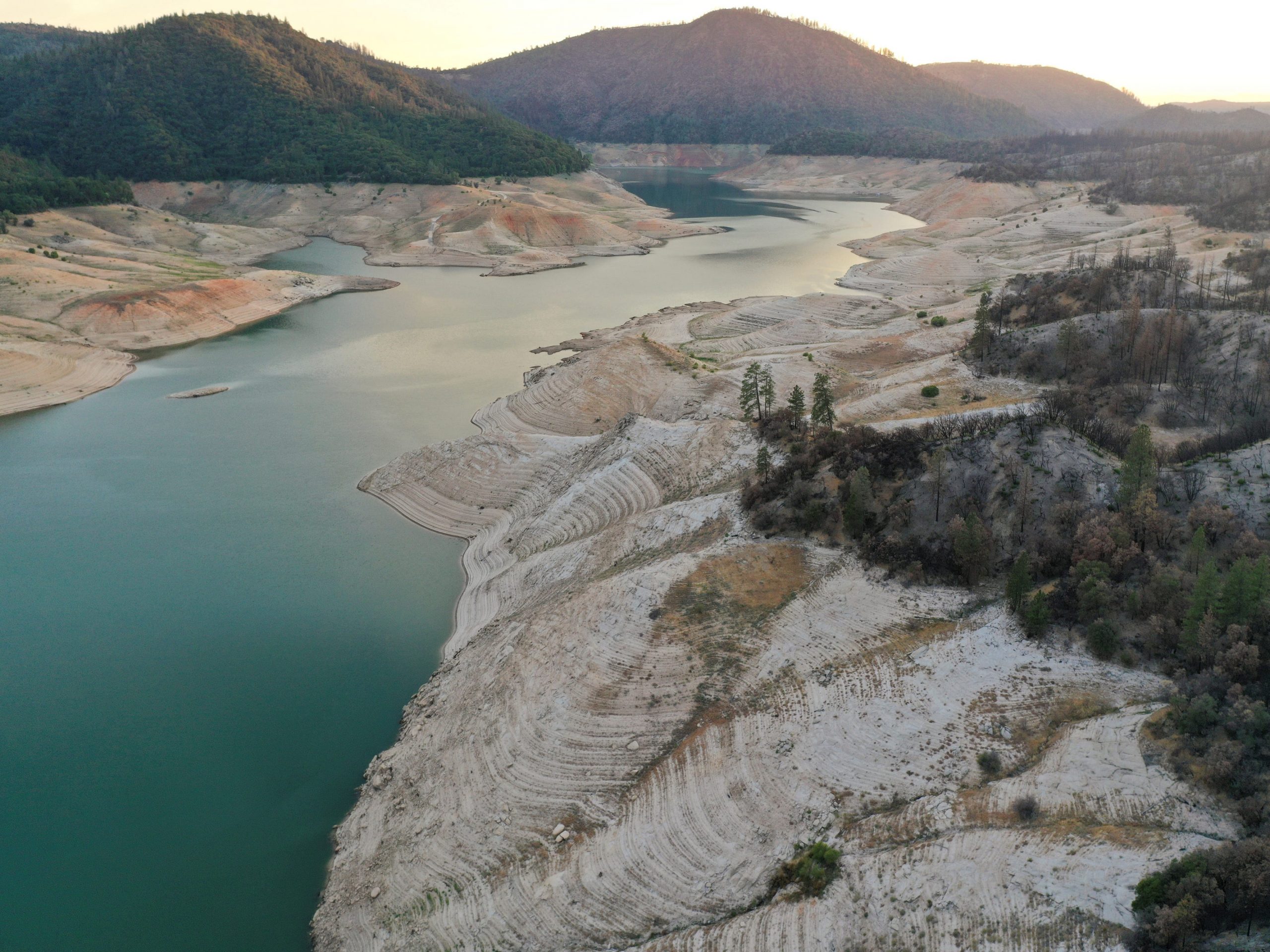
Aude Guerrucci/Reuters
- The western US is withering under its worst drought in at least 20 years – possibly in 1,200 years.
- An early heat wave strained California power grids and brought record temperatures across the West.
- Extreme heat and dryness could cause devastating wildfires, rolling blackouts, and water shortages.
- See more stories on Insider's business page.
The western US was already withering in severe drought when a heat wave struck last week. Temperatures reached 116 degrees Fahrenheit in Las Vegas, 115 in Phoenix, and over 110 for eight days straight in Tucson.
Daily highs shattered hundreds of records across the West, and California Gov. Gavin Newsom declared a statewide emergency, saying the heat wave put "significant demand and strain on California's energy grid."
The hottest months lie ahead, so this early extreme weather could foreshadow another devastating fire season. Last year's fires burned a record 4 million acres in California, 1.07 million in Oregon, and at least 713,000 in Washington.
Current drought conditions across the West and Southwest are more widespread and severe than they've ever been in the 20 years the US Drought Monitor has been mapping them.
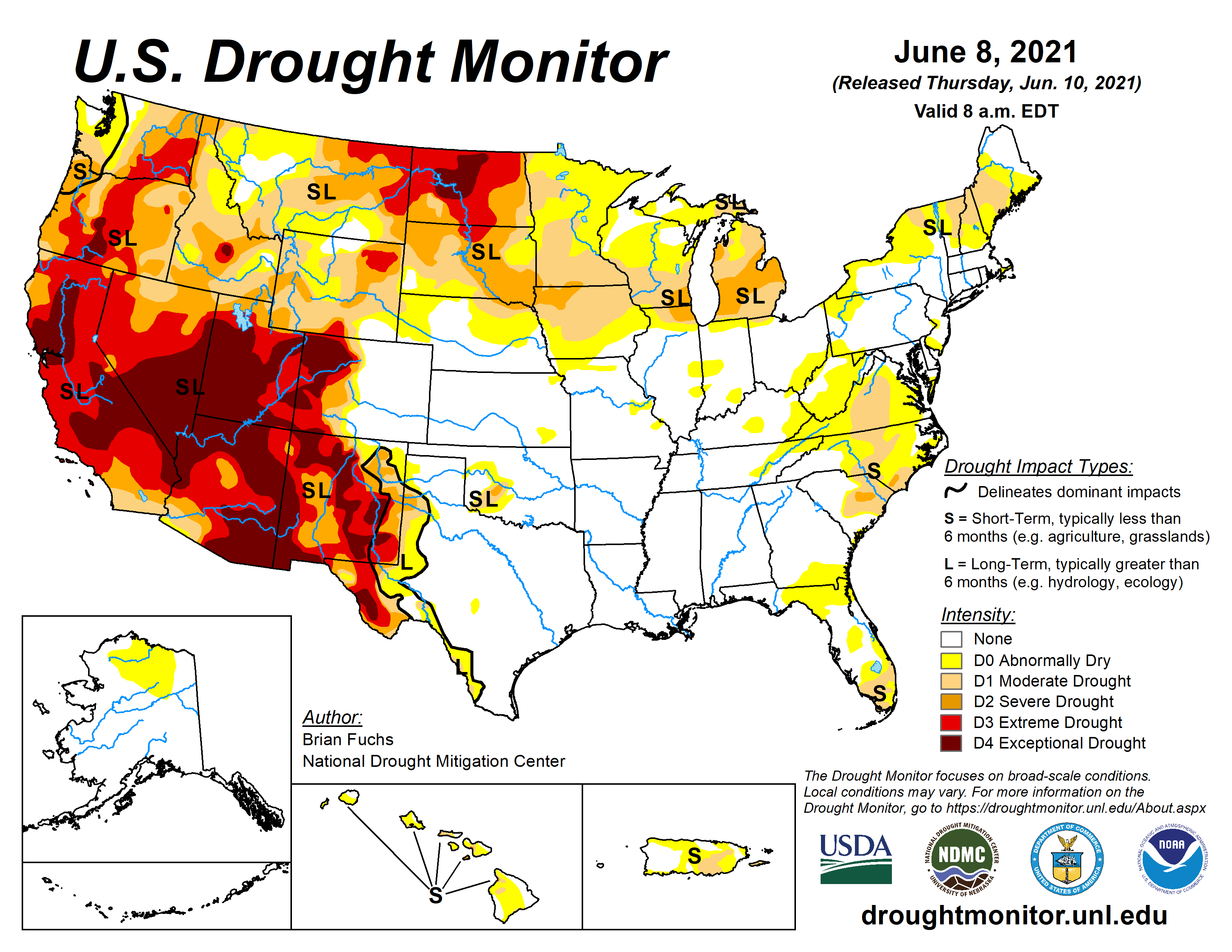
National Drought Mitigation Center
Compare that to June of last year, mapped below.
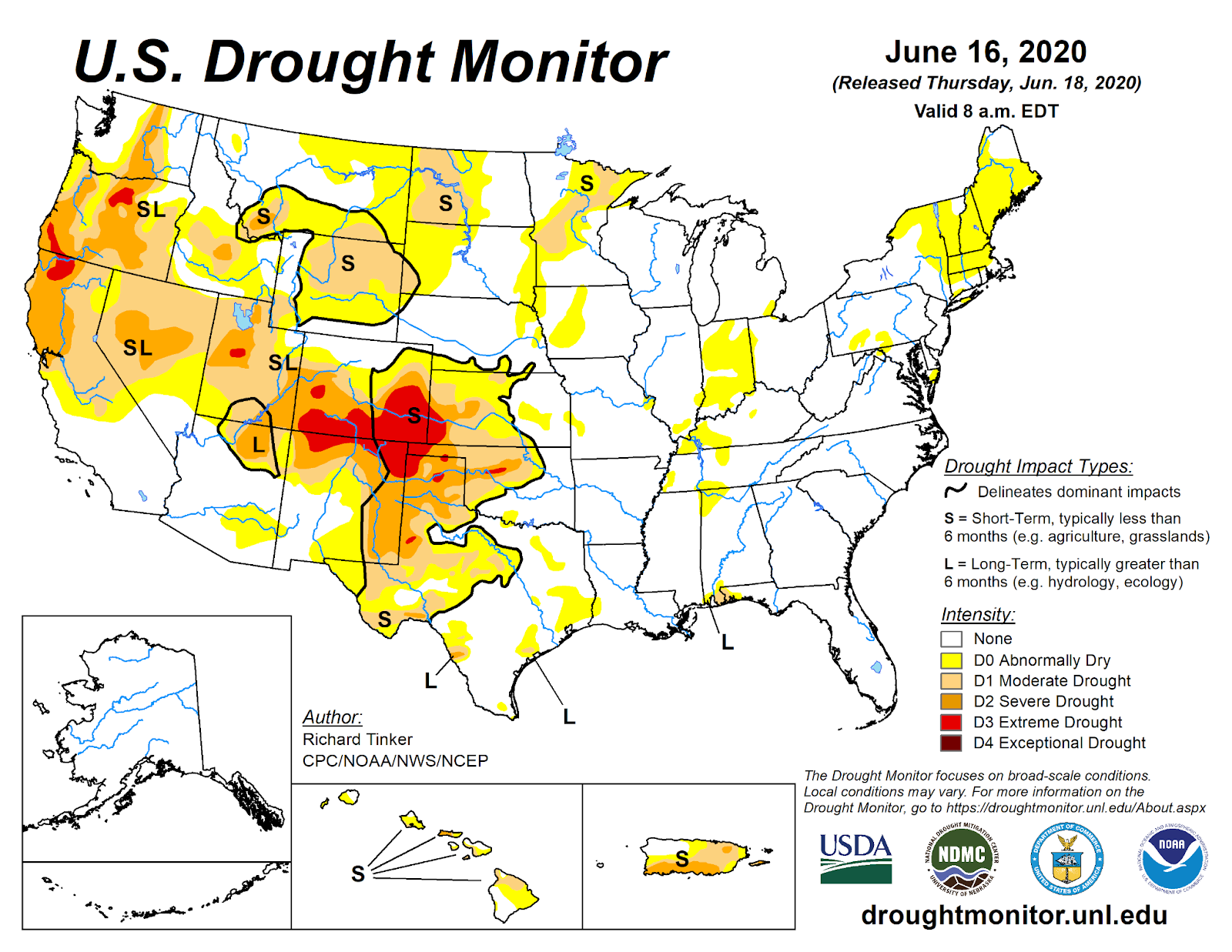
Droughtmonitor
"I'm worried about this summer," Kathleen Johnson, a paleoclimatologist at the University of California, Irvine, told The Guardian. "This current drought is potentially on track to become the worst that we've seen in at least 1,200 years. And the reason is linked directly to human-caused climate change."
Scientists can't attribute an individual drought or heat wave directly to climate change. But rising global temperatures are changing the western US profoundly: Warmer air causes more moisture to evaporate, which leads soil to dry out. That raises the risk of drought and leaves forests full of tinder-dry foliage, primed for wildfires.
Heat waves occur three times more often and last about a day longer than they did in the 1960s, according to records of such waves across 50 US cities. They also start earlier and continue later into the year - the heat-wave season is 47 days longer than it was in the 1960s.
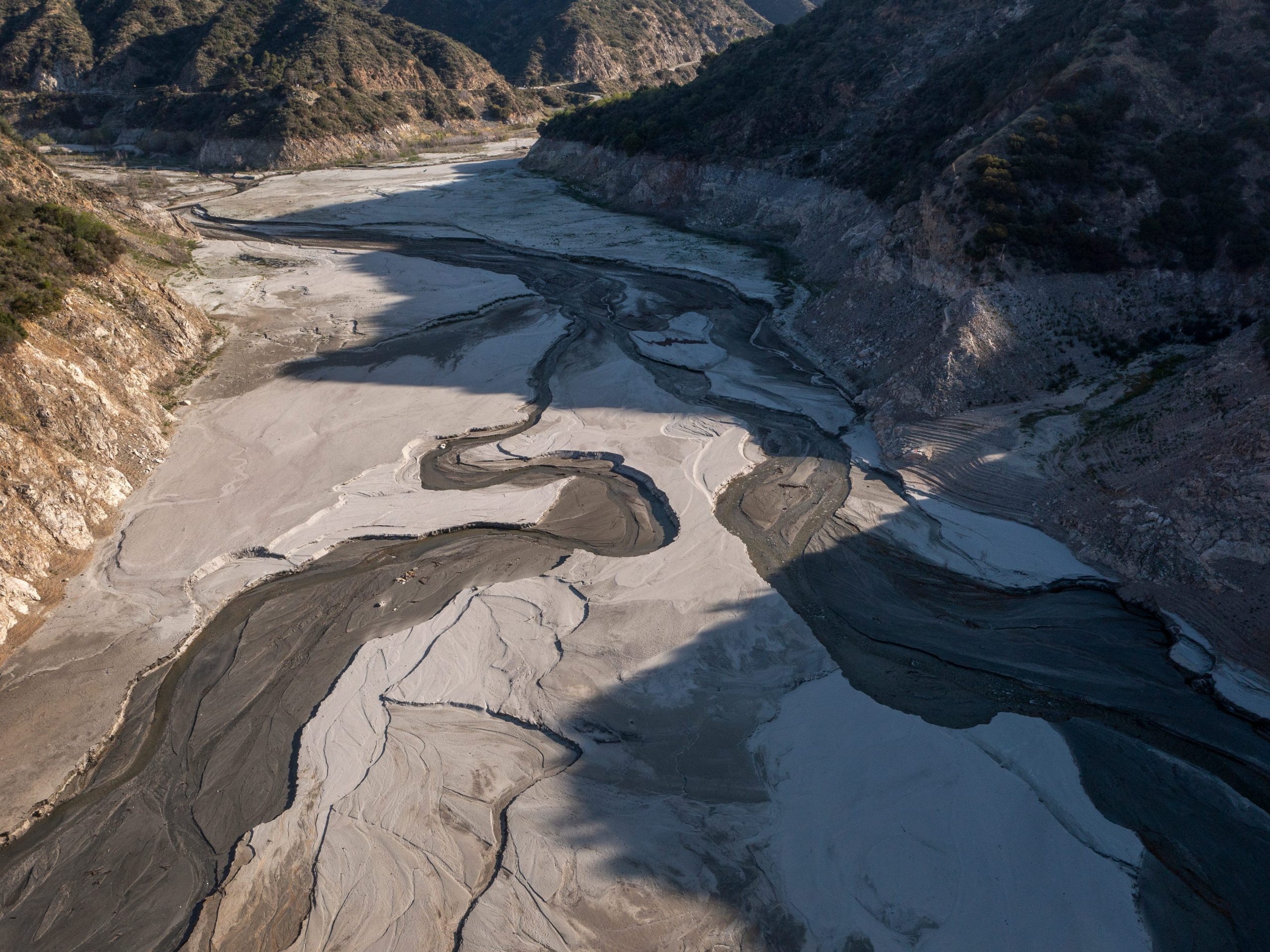
Getty
"Much of the western United States will continue the trend of hot and dry weather, much like the summer of 2020," Brandon Buckingham, a meteorologist at AccuWeather, told Insider. "Each and every western heat wave throughout the summer will only heighten wildfire risks."
Meteorologists expect yet another heat wave, mostly over Northern California, next week.
Summer may bring blackouts, water shortages, and wildfires
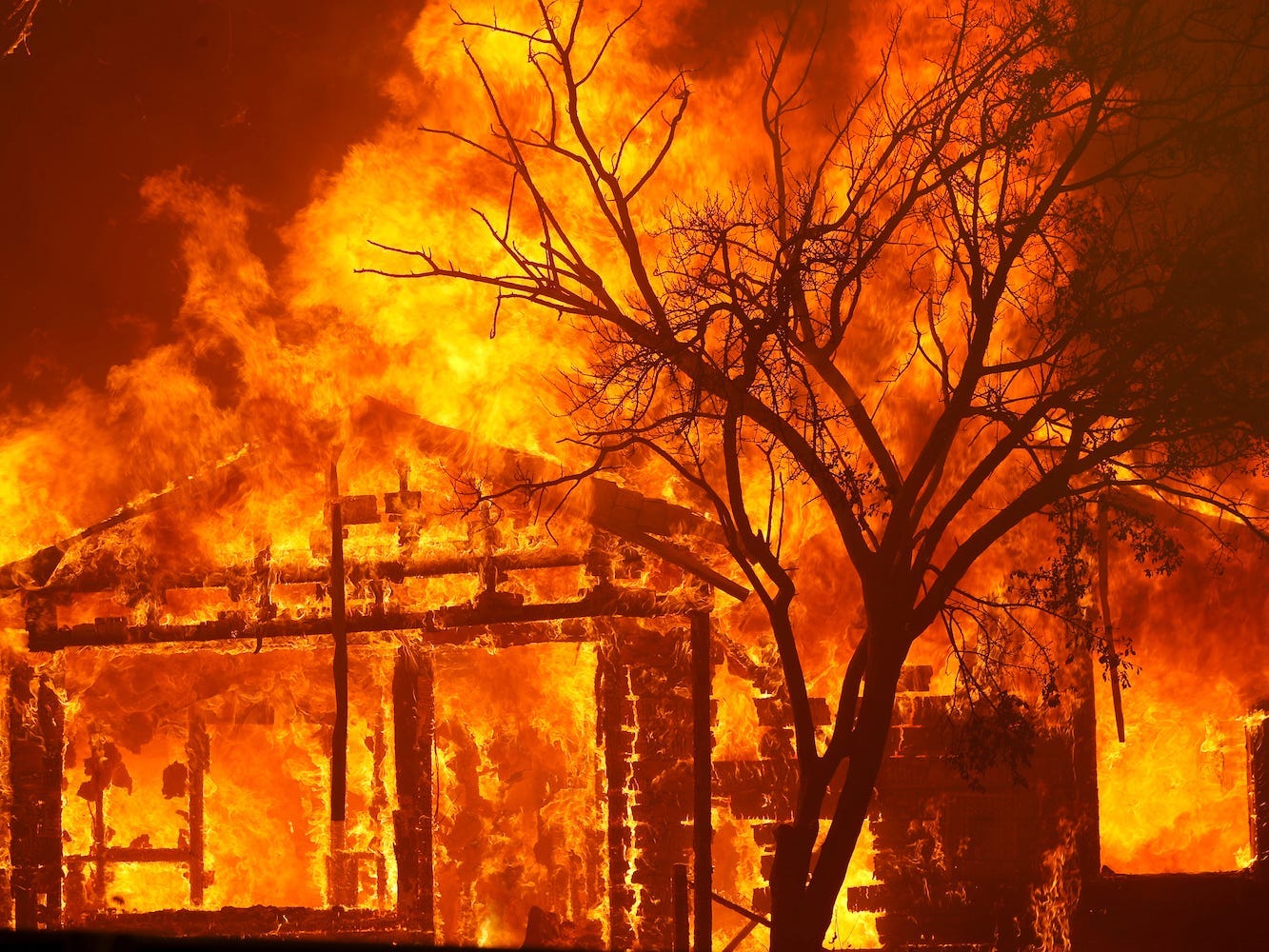
Stephen Lam/Reuters
Hundreds of thousands of Californians already face water-use restrictions in the Bay Area, since reservoirs are dwindling and there's almost no snowpack to replenish them. Gov. Newsom has declared drought emergencies in 41 of the state's 58 counties, encompassing 30% of California's population.
Lake Mead - the largest reservoir in the US, which provides water to 25 million people across Arizona, Nevada, California, and Mexico - is at its lowest level since it was filled in the 1930s.
California's second-largest reservoir, Lake Oroville, has fallen to "alarming levels," a California Energy Commission spokesperson told CNN on Thursday. Normally, the lake's water pumps through the Edward Hyatt Power Plant to generate electricity for 800,000 homes. But the reservoir is currently at just 35% capacity - less than half the historical average.
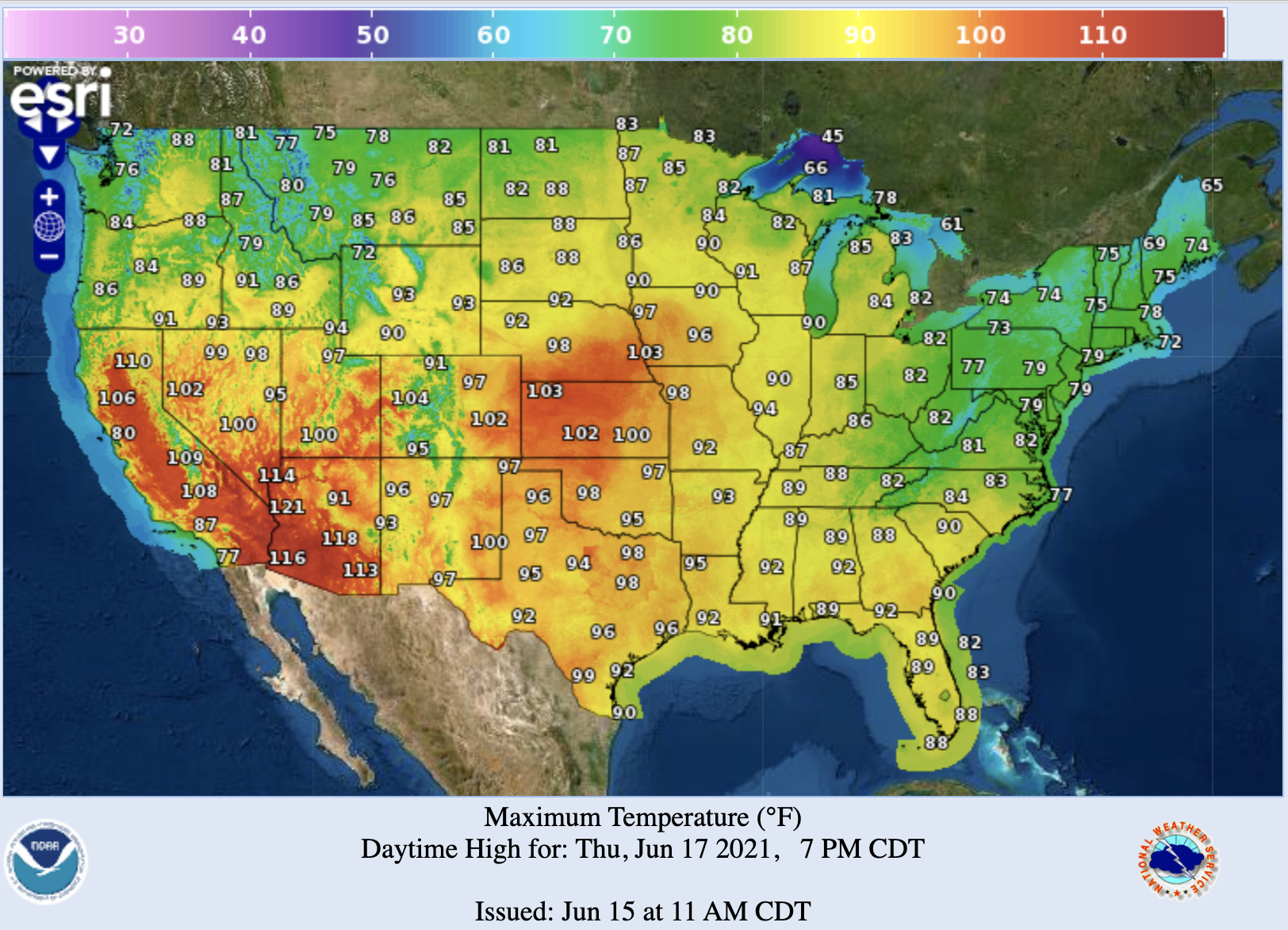
NOAA/National Weather Service
When heat waves roll in, even more water evaporates. At the same time, people crank up air conditioners, causing energy demand to spike. This can strain the power grid and lead to rolling blackouts. It happened last year: When a heat wave hit in August, hundreds of thousands of residents lost power in increments of up to 2.5 hours. Those were California's first rolling blackouts in 19 years.
That's different from PG&E's safety shutoffs, though, which are meant to prevent aging power lines from starting wildfires and can last for days. PG&E has warned that such shutoffs could be more frequent this year than in 2020, according to the Wall Street Journal.
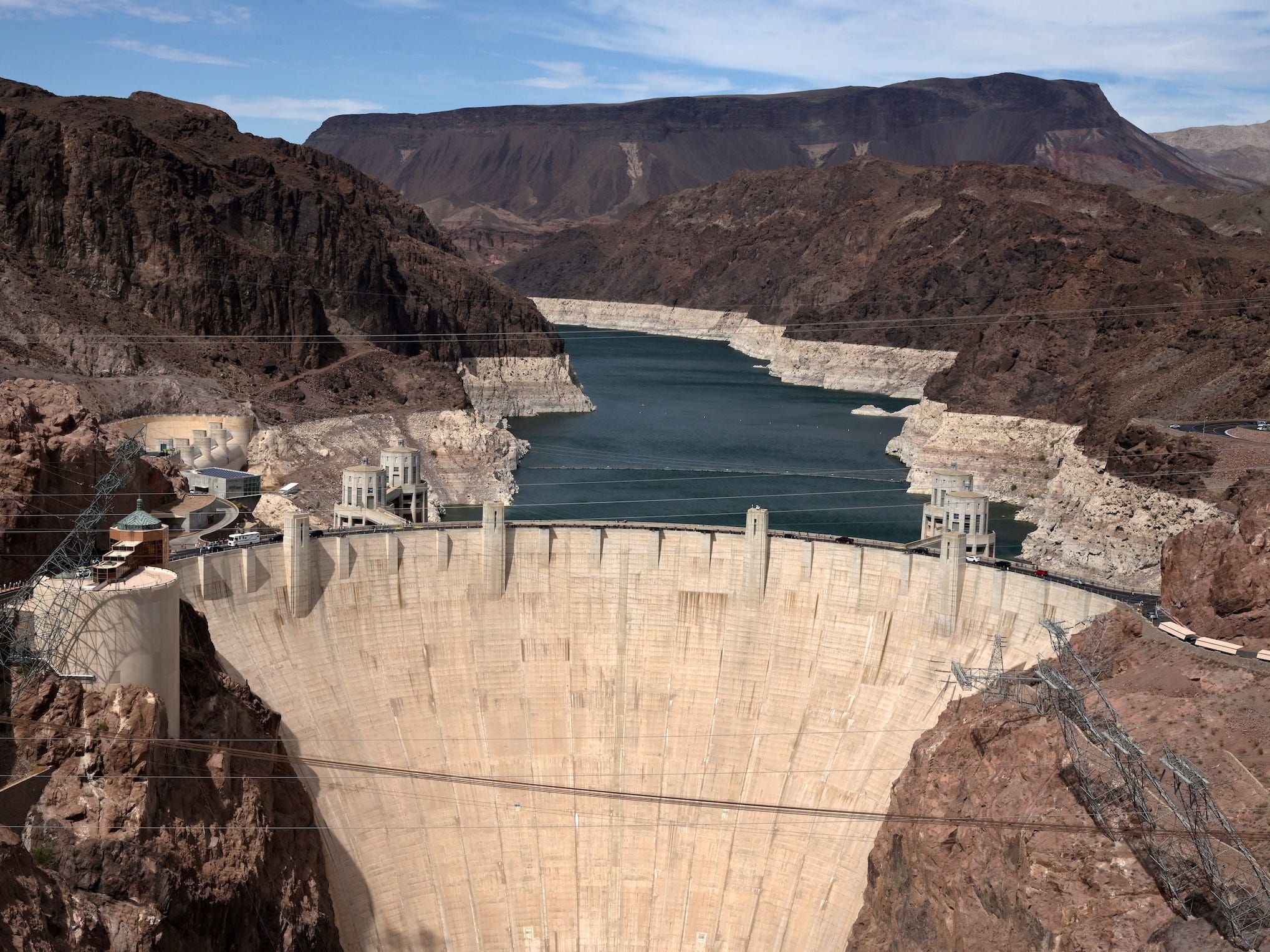
Bridget Bennett/Reuters
With no end to the drought in sight, officials expect they'll be forced to close Edward Hyatt Power Plant plant in two or three months, CNN reported.
That's the time of year when wildfires typically peak. But already this year, blazes have forced evacuations in California's Monterey and Shasta counties. Smoke from fires in Arizona and Utah has billowed over Colorado.
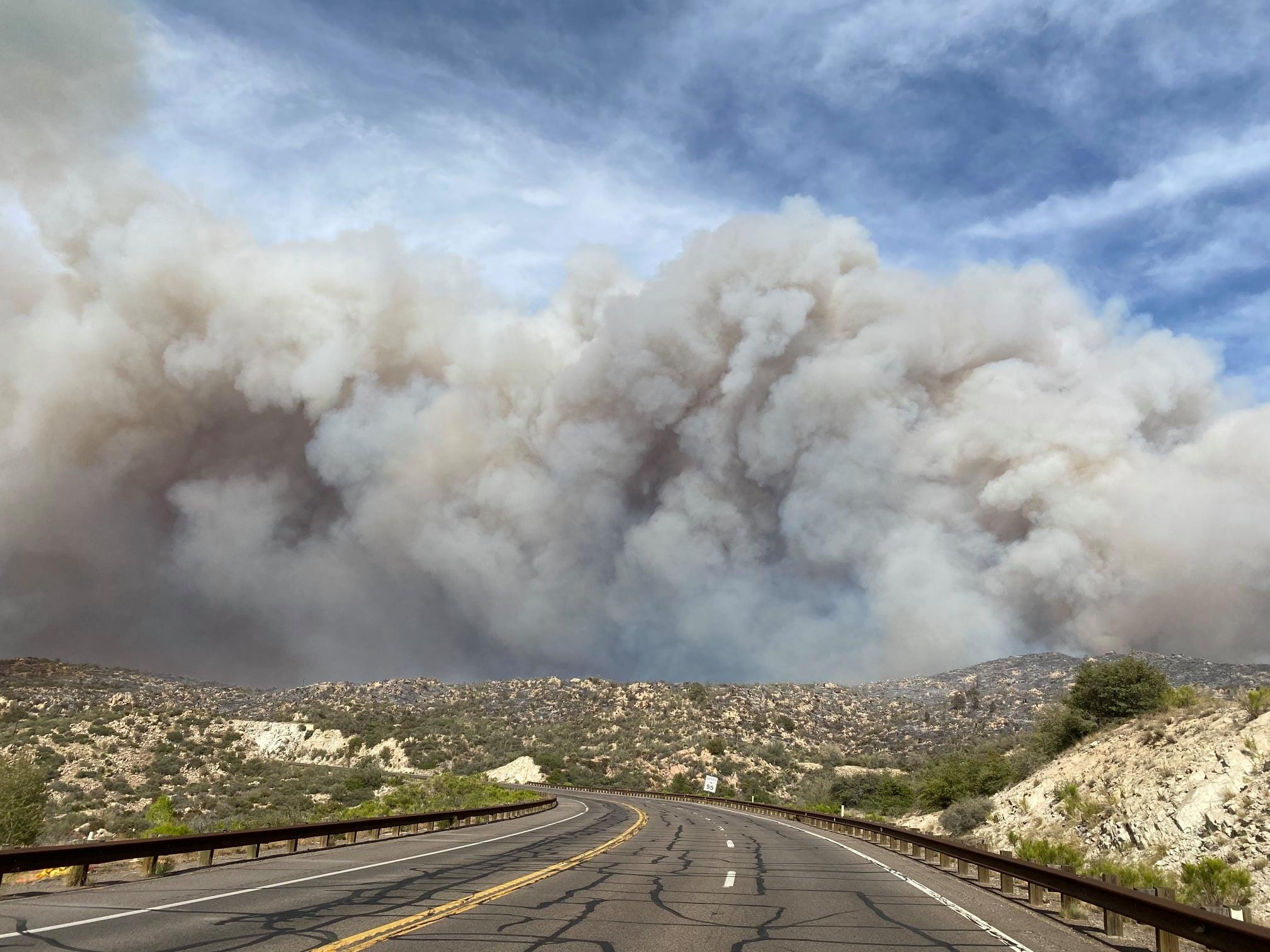
Arizona Department of Forestry and Fire Management via Reuters
An active monsoon season in July and August may chip away at the drought in the Southwest, Buckingham said, but West Coast states will probably see no such relief.
"The fires we saw in the last couple of years were really awful, and this year it seems like we're on that same trajectory," Daniel Swain, a climate scientist at the University of California, Los Angeles, told The Guardian. "It kind of feels like deja vu."
Grace Kay contributed reporting.
